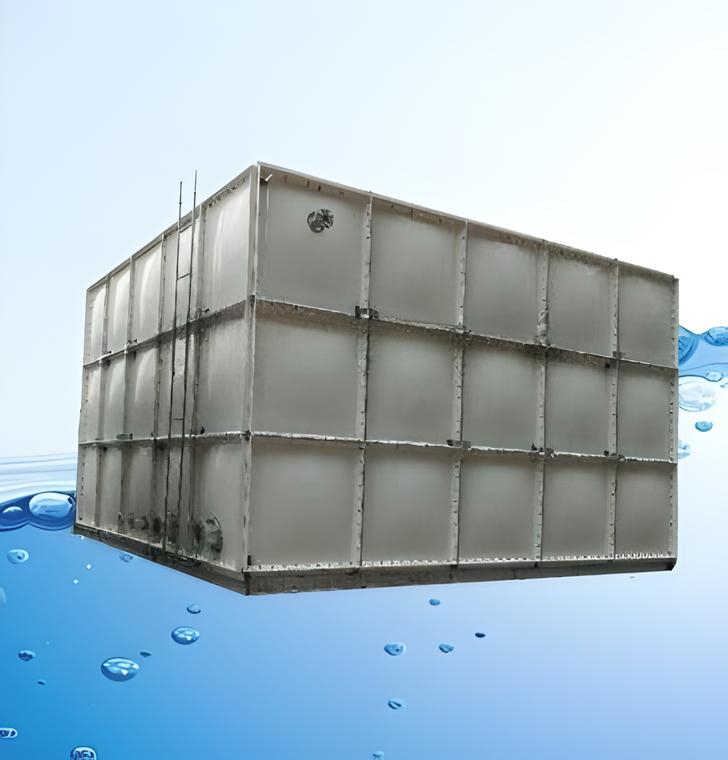As urbanization accelerates, many cities around the world face a growing challenge: rapidly expanding wastewater volumes while maintaining treatment efficiency, reliability, and environmental safety. To meet new national and municipal targets, metropolitan areas must enhance wastewater treatment capacity by more than 20 million m³/day within the next few years.
Among the key infrastructure components enabling this massive expansion, FRP water tanks — including GRP water tanks, fiberglass tanks, and FRP sectional panel tanks — have become essential due to their corrosion resistance, high strength-to-weight ratio, long service life, and rapid modular deployment. At Pipeco, FRP tank solutions are widely used as equalization tanks, buffer tanks, chemical dosing tanks, sludge conditioning tanks, reclaimed water storage units, and more across modern wastewater treatment facilities.
Municipal wastewater treatment systems depend on stable water storage and chemical conditioning to maintain operational continuity. Traditional materials such as steel or concrete face increasing challenges:
By contrast, FRP water tanks provide outstanding long-term stability and cost efficiency, especially for chemical storage, overflow regulation, and treated water buffering. These advantages allow cities to add treatment capacity rapidly while ensuring reliability and compliance.

Wastewater contains a complex mix of corrosive substances — ammonia, hydrogen sulfide, organic acids, chlorine, and flocculants. The inorganic-resistant resin system used in Pipeco’s FRP tanks delivers:
This is a key reason why GRP sectional tanks and fiberglass tanks are widely adopted in wastewater treatment plants (WWTPs).
A 20 million m³/day expansion requires fast installation. Pipeco’s FRP sectional panel tank design enables:
Compared to concrete tanks, construction time is reduced by 40–60%.
FRP tanks are much lighter than steel or concrete, lowering:
This is particularly beneficial for retrofit projects and expansions inside existing WWTPs.
Pipeco’s GRP water tanks are manufactured with food-grade resin and smooth panel surfaces, preventing:
This ensures both treated water and reclaimed water remain safe and stable.
FRP tanks stabilize fluctuating influent volumes, ensuring steady treatment flow — a critical function when cities increase capacity by millions of cubic meters per day.
FRP is ideal for storing sodium hypochlorite, PAC/PAM, and pH adjustment chemicals that corrode metal containers.
Fiberglass-reinforced tanks resist the abrasion and chemical aggressiveness of high-solid sludge mixtures.
As urban recycling and reuse grow, FRP tanks offer clean, stable reservoirs for:
To achieve such large-scale capacity increases, wastewater plants need infrastructure that is: rapid, modular, durable, corrosion-proof, and adaptable.
Pipeco’s FRP tank systems help cities meet these requirements by delivering:
As a result, FRP tanks have become an essential component of modern WWTP upgrades.
From GRP sectional tanks to fiberglass storage tanks, Pipeco delivers reliable and scalable solutions for wastewater treatment expansion.
As cities strive to add 20 million m³/day of new wastewater treatment capacity, FRP tanks—lightweight, corrosion-resistant, and modular—are becoming indispensable. Pipeco’s FRP and GRP water tanks provide proven reliability and rapid deployment, helping municipalities upgrade critical infrastructure with confidence.
Experience the brand Trusted by Renowned Companies across the GLOBE.

Pipeco stands at the forefront of the market, recognized as a premier manufacturer, supplier, and exporter specializing in top-tier GRP water tanks, stainless steel water tanks, and SMC manhole covers, FRP Water Tank, Fiberglass Tank, SMC Water Tank committed to delivering unparalleled quality and excellence.